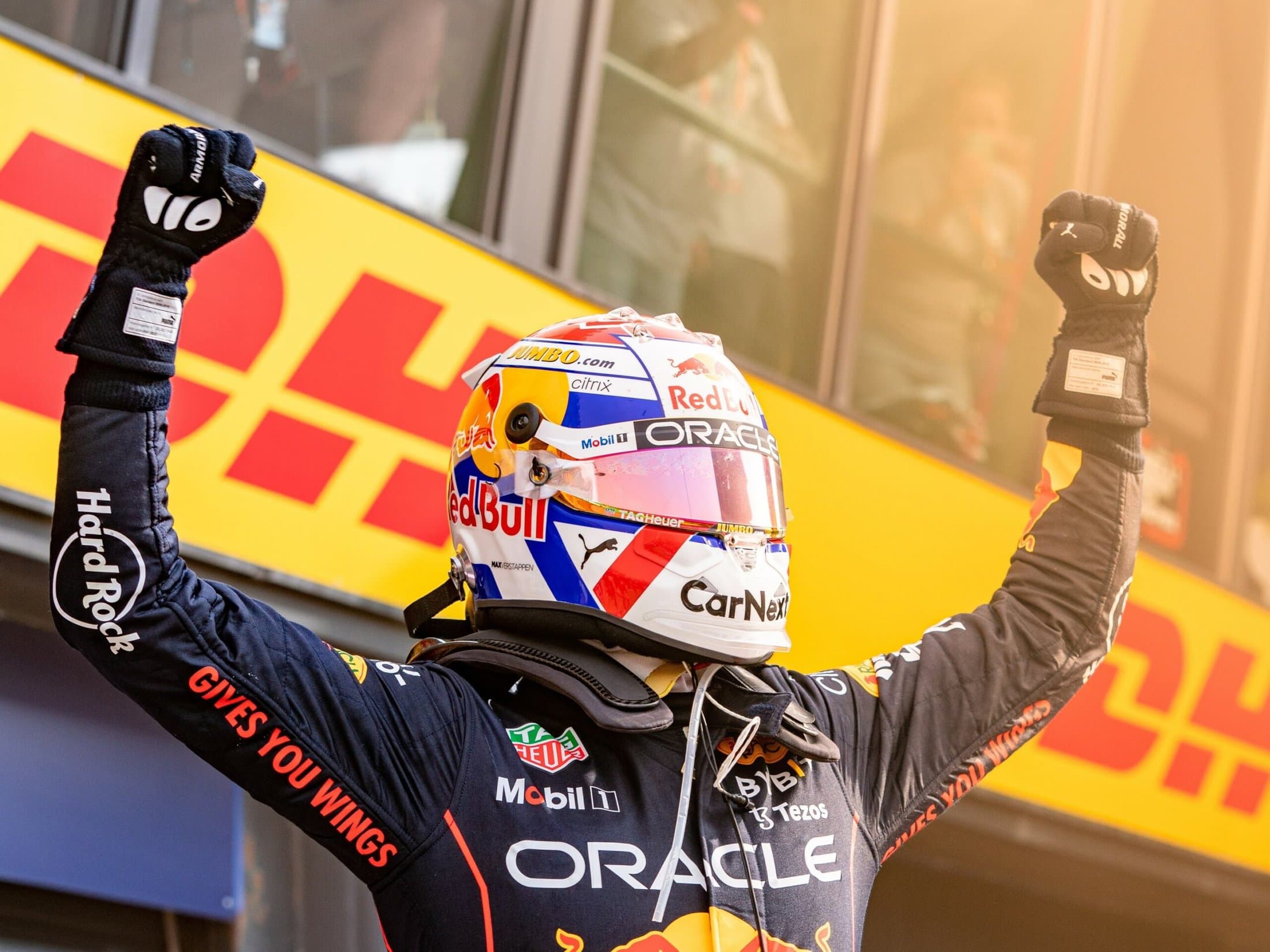We are approaching the end of the 2025 FORMULA 1 season, and the teams have already been hard at work on their 2026 cars for some time. But what exactly is changing next season? Which new rules and technologies do the teams need to take into account? We’ve laid everything out for you, so you know exactly what to expect and what’s new in F1 in 2026.
What are the changes for the 2026 F1 season?
2026 is when things get real. There will be a lot of changes in rules and regulations. The cars will look different, new systems will be introduced, and racing will hopefully be improved. The regulations have not been set in stone yet, so they could still change slightly. However, there are already some solid guidelines that give us an idea of what F1 will be like in 2026.
1. The cars will be both smaller and lighter
One of the biggest criticisms that FORMULA 1 has received over the years is that the cars are getting too big and too heavy. This isn’t ideal for racing at circuits like Monaco, where the cars can barely pass each other due to their size. In 2026, F1 hopes to change this. The cars will be smaller, with the wheelbase reduced from 3600 mm to 3400 mm. The wheel rims will remain 18 inches, as introduced in 2022, but the width of the front and rear tires will be reduced by 25 mm and 30 mm, respectively. This reduction will cause the tires to have slightly less mechanical grip.
The width of the cars will also be reduced by 100 mm, and the floor by 150 mm. This helps reduce downforce by 30% and drag by 55%. The reduction in drag will mean that the cars use less fuel, which could lead to higher top speeds. With the reduction in size and other measures, the cars will be about 30 kg lighter than they were in 2024.
2. Which changes will there be aerodynamically in F1 2026?
Besides the reduction in size, the car will also undergo significant changes aerodynamically. As mentioned before, not all the regulations have been set yet, but this is what we know so far.
One notable change is to the front wing. The wing will be about 10 mm smaller, but here’s the interesting part: the front wing, like the rear wing, will have two active flaps that can open up under certain circumstances. The rear wing will have three elements. These new wings will help the cars balance better in different situations. The lower beam wing will also disappear.
Another aerodynamic change will be to the floor. The floor will be much simpler compared to those of the current generation of cars. It will be partly flat with a D-driven diffuser. Additionally, as mentioned before, the floor size will be reduced. The floor will play a major role in the reduction of downforce.
3. DRS as we know it will disappear
Remember the front and rear wings that can both open up in 2026? You might think this is a new addition to DRS, but it is not. This new system will be called X-mode and Z-mode. Unlike DRS, however, for this system, drivers will not have to be within one second to activate it. So, what is it then?
The new system is not necessarily designed to help drivers overtake each other, but it is more of an aid to help them follow each other better. This leads us to X-mode. X-mode enables a configuration with low downforce, which helps the cars follow each other more easily, saves fuel, and allows drivers to reach higher top speeds. Drivers can activate X-mode manually. Then there is Z-mode, which is used when the cars experience high downforce in corners. It can be activated automatically when X-mode is turned off, or when drivers use their brakes.
But rest assured, even though the old DRS system is disappearing, something similar will be introduced: Manual Override Mode (MOM). It will essentially work the same as DRS. When drivers are within a second of each other, they will get access to the maximum power of their MGU-K, giving them an extra boost to help them overtake. A big difference is, they will not have to be within a certain zone to activate the Manual Override Mode.
4. Changes to the Power Units in F1
The changes to the engine are also a big deal in 2026. It is a step closer to sustainability for F1. The new power units will run on 100% sustainable fuel, and they will have a significant increase in electrical power, almost 300%! With more electrical power, the cars will need less fuel. However, this change also brings a challenge for the driver. Turbo lag could return because the MGU-H has been removed, making the cars more difficult to control on corner exits.
5. The 2026 cars will be even safer
The 2026 cars will also be safer. Several parts of the cars will be reinforced. The roll hoops, for example, will be reinforced, as well as the anti-intrusion panels on the sides of the cockpit. This will protect the driver if the car flips over in a crash.
There are also some changes to the front impact structure. In this generation of cars, the structure consists of a single system that breaks off or deforms during a crash. However, this has now been changed to a two-phase impact structure, providing more safety during a crash. The second phase of this structure will protect the driver in the event of a second impact during a heavy crash.
Additionally, there will be a safety cell in the chassis of the cars. This cell will house the MGU-K, the battery, and the control electronics for added safety.
6. More pre-season testing
Because there will be so many changes in the 2026 season, teams will be allowed more testing. Usually, pre-season testing consists of 3 days. However, to help the teams with their brand-new cars, there will be 3 pre-season testing sessions. The first test will take place at the Circuit de Barcelona-Catalunya from January 26 to 30. This test will be held behind closed doors and therefore cannot be followed by the public. The second test will take place at the Bahrain International Circuit from February 11 to 13. The third and final test will also be held in Bahrain, from February 18 to 20.
7. New Calender
The Formula 1 calendar for the 2026 season has been released, featuring several key changes for the year. The Canadian Grand Prix will move to May to create a more efficient logistical schedule. It swaps places with the Monaco Grand Prix, meaning Monaco will now take place on June 7, while Canada will be held on May 24. The 2026 season will also introduce a brand new race in Europe: the Grand Prix of Madrid. For the first time in ten years, Formula 1 will welcome a new European event. The last new “European” Grand Prix was the Azerbaijan Grand Prix. The Grand Prix of Madrid will be held at the Circuito de Madring and will conclude the traditional European leg of the Formula 1 season, taking over the slot previously held by the Italian Grand Prix. Additionally, the Azerbaijan Grand Prix will take place on a Saturday this year, as Sunday is a national holiday in the country.
8. New Sprints
FORMULA 1 has now announced the Sprint calendar, which includes a few new races as well as returning Sprint locations. As in recent years, the Sprint races start in China and Miami. The third Sprint on the calendar takes place in Canada at the Circuit Gilles Villeneuve, marking the first time FORMULA 1 will hold a Sprint in Canada. Two months later, the Sprint races continue at Silverstone, the first Sprint at this iconic British circuit since 2021. After the summer break, F1 will hold a Sprint at the Zandvoort circuit during the final edition of the Dutch Grand Prix, with the Sprint calendar concluding at a new location in Singapore at the Marina Bay Circuit.
8. 11th team on the grid
FORMULA 1 is expanding in 2026 with the introduction of a brand-new 11th team: Cadillac. With seasoned drivers Sergio Pérez and Valtteri Bottas behind the wheel, the team adds experience to the grid. Their presence promises fresh competition, more strategic battles, and plenty of excitement for fans in the upcoming season.





